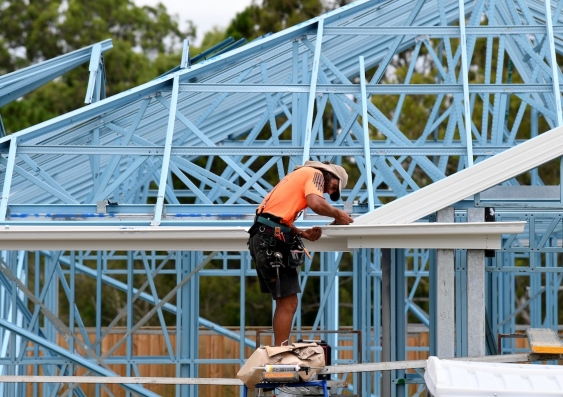Budget expands deposit scheme for first home buyers: a second-best option, with risks down the road
The federal government’s expanded first home loan deposit scheme will help those who qualify, at the expense of those who don’t.
The federal government’s expanded first home loan deposit scheme will help those who qualify, at the expense of those who don’t.

With housing affordability set to be a key election issue, the 2022 federal budget expands the scheme the Coalition put forward at the 2019 election to help first home buyers.
The First Home Loan Deposit Scheme helps those without the standard 20% deposit required by mortgage lenders. For those who qualify, it guarantees up to 15% of a loan’s value, meaning buyers can secure a home loan with a 5% deposit.
In the 2021-22 financial year the scheme was capped at 10,000 places. The 2022 budget is expanding this to 35,000 a year, plus an extra 10,000 places for first home buyers in regional areas.
It will also expand a category for single parents introduced in the 2021 budget, allowing some to enter with a 2% deposit, increasing the cap to 5,000 a year.
Government programs to assist first home buyers are routinely criticised as simply putting upward pressure on prices, providing no real benefit to first home buyers. This scheme will push up prices, but not by the same amount as the value of the assistance.
So it will help those who qualify, albeit partially at the expense of those who don’t.
Australia’s relatively high housing prices can historically be attributed to the significant tax advantages for property ownership and rigidities on the supply side, such as zoning and other regulatory constraints.
In the past two years these factors have been supplemented by the potent combination of COVID-19 and low interest rates.
This has been a global phenomenon, by no means unique to Australia. The working-from-home revolution induced a surge in demand for larger houses and a shift to rural and regional areas at the same time as central banks pushed official interest rates close to zero to stimulate faltering economies.
So rather than the property market falling, as many tipped in early 2020, it has surged, pricing even more people out of the market.
The deposit guarantee scheme scheme to assist first home buyers is what economists call a second-best option. An optimal solution would more directly address the demand and supply reasons driving up prices. In lieu of this, the government’s plan is to give first-home buyers a boost over others.
Any criticism such a scheme simply lifts all boats and puts upward pressure on prices is not quite correct.
It will push up prices, but not by the same amount as the value of the loan guarantees. To do that all buyers would have to get the same concession, and there would have to be no effect on the supply of houses. Supply in the housing market may be slow to respond but it does change with demand.
Over the past two years first home buyers have made up about 20% of all buyers. This scheme, even with the expanded cap, will benefit fewer than half that number – about 7% of all buyers.
So the scheme will have some impact on property prices, but not enough to offset the value of the help to those buyers who qualify. On the other hand, those swapping homes will pay marginally more. So will investors, and renters in due course.
The major concern with this scheme is the risk those using it to buy a home may then get into financial trouble and default on their mortgage.
This was a contributing factor in the US subprime mortgage crisis that led to the global financial crisis of 2007-08. Policies designed to get low-income households into the market appeared to work until the crisis hit. Then house prices tumbled and many were forced to sell at big losses.
When you leverage up, borrowing 95% or 98% of the value of a house, you are more exposed if prices fall. Even a small decline could more than wipe out your equity.
Housing is not risk-free. Timing matters. House prices can fall as well as rise. With interest rates on the rise, and huge global economic uncertainty, some negative consequences from this scheme down the track cannot be ruled out.
![]()
Nigel Stapledon, Research Fellow in Real Estate, Centre for Applied Economic Research, UNSW Sydney
This article is republished from The Conversation under a Creative Commons license. Read the original article.